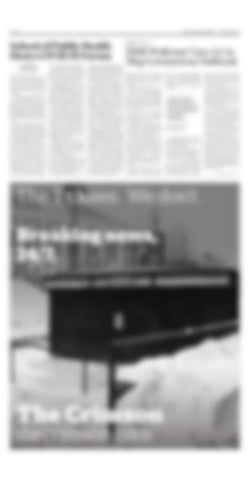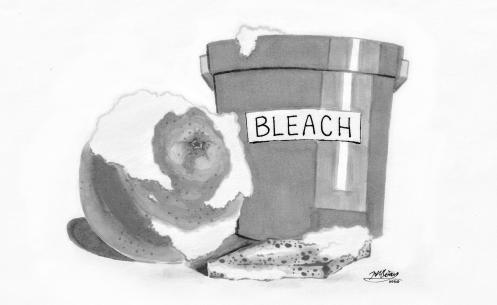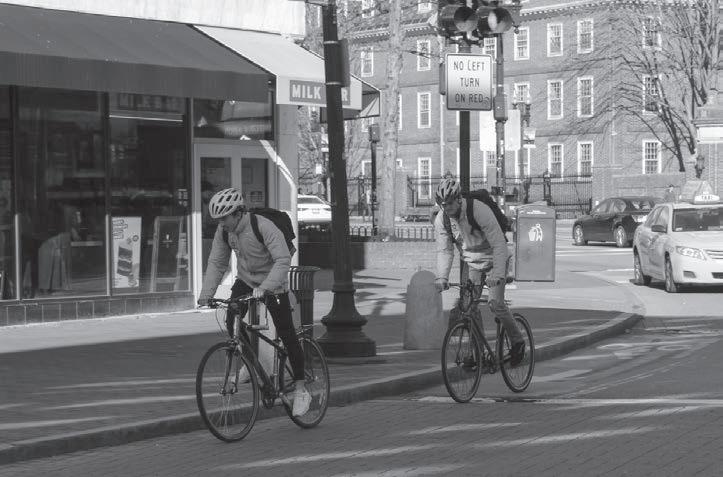Page 3
THE HARVARD CRIMSON | March 3, 2020
School of Public Health Hosts COVID-19 Forum By Helen He and Alex M. koller Contributing Writers
P ublic health experts convened to share information, updates, and advice for the public on the recent coronavirus outbreak during a Monday forum at the Harvard School of Public Health. Health care journalist Elana Gordon moderated the forum, which featured in-person panelists Paul D. Biddinger, the medical director of emergency preparedness at Massachusetts General Hospital, and School of Public Health professors Marc Lipsitch and Winnie Chi-Man Yip. Hilary D. Martson, a policy advisor at the National Institute of Allergy and Infectious Diseases, joined the forum remotely via video call in place of NIAID Director Anthony S. Fauci, who was originally slated to speak. Coronavirus, also known as COVID-19, broke out in Wuhan, China, at the end of last year. More than 90,000 cases have been reported worldwide, and more than 3,000 people have died from the illness. Harvard restricted travel to Italy and Iran Saturday amid an outbreak of COVID-19 cases in the two countries. The University previously instituted travel restric
tions to China and South Korea. Yip, who also serves as faculty director of the China Health Partnership at the School of Public Health, discussed the Chinese government’s response to the outbreak at the event. “China has been, I would call it, in a firefighting mode — locking down Wuhan, imposing very, very strict travel bans across the entire country, extending the Chinese New Year holiday,” Yip said. She added that these strategies were consistent with expert recommendations at the time. The panelists stressed the importance of expanding testing capacity to combat the outbreak. “Testing is really the biggest barrier we face,” Biddinger said. “I think trying to make sure we can know who does and who doesn’t potentially have the virus is going to be one of the most significant challenges in the healthcare system.” Martson argued that, given the long time frame required to develop new vaccines, public health measures may be the most reliable and timely responses in the interim. “If everything moves as quickly as possible, the soonest that it could possibly be would be around one and a half to two years — that still might be very optimistic,” Martson said. Lipsitch identified two “es-
sential” pieces of information researchers are focusing on to better understand COVID-19 transmission: the role children play in spreading the virus and the number of undetected cases. Toward the end of the forum, the panelists emphasized the importance of cooperation and empathy over division in response to public fears and instances of racism in wake of the pandemic. “We are all in this together,” Biddinger said. “We should be grateful for actions of the Chinese, the Italians, others who have delayed some of the spread to help us respond.” “We should all recognize that we have a stake in responding effectively together, and that’s true in our neighborhoods as well as in the country and our global perspective,” he added. Throughout the event, panelists reminded the audience of the level of uncertainty surrounding COVID-19 and urged them to be prepared for both progress and persisting unknowns.“I don’t think there is an easy yes-or-no answer to the question of whether we are prepared,” Biddinger said in an interview after the event. “I think we are absolutely more prepared in the healthcare system than we have ever been and we are building on decades of work, but we also have real capacity constraints.”
Virus From Page 1
HMS Professor Uses A.I. to Map Coronavirus Outbreak Brownstein. The technology collects similar local data and uses it to create an extensive, publicly-available map of the outbreak. The system updates in real-time as it collects and processes data from the web. Researchers with HealthMap have partnered with organizations including the World Health Organization and Centers for Disease Control and Prevention. “It provides situational awareness so we get insights globally into what’s happening,” Brownstein said. Brownstein said the system’s goal is not only to identify cases, but also to gather information on the public perception of disease outbreaks. “The social media mining provides us with a perspective on how the population’s reacting to coronavirus and also rumors that people have around the disease,” Brownstein said. Brownstein founded HealthMap in 2006 with a team of epidemiologists, researchers, and software developers. Using novel sources of information, including Google searches, social media posts,
blogs, and chat room inquiries, the technology identifies markers of various infectious diseases and collects data for researchers and government agencies.
The social media mining provides us with a perspective on how the population’s reacting to coronavirus. John S. Brownstein HMS Professor
Brownstein said the team created HealthMap to provide clear information on the progression of diseases. He added that it has proven effective in mapping many outbreaks over the past decade, such as swine flu and ebola. “It was very challenging to get an accurate picture of what was happening around the world in terms of infectious diseases. Either we didn’t know about events, or govern-
The T closes. We don’t. Breaking news, 24/7.
The Crimson thecrimson.com
ments weren’t really reporting them, or it was information that was locked in a whole bunch of different information streams,” he said. Using a combination of machine learning and crowdsourcing, HealthMap uses information from the web that epidemiologists do not typically use to track diseases, according to Brownstein. “If you could organize that sort of information — scrape it, tag it, process it, and remove the noise — you could provide a view of emerging outbreaks in a way that hadn’t been shown before,” Brownstein said. Brownstein added that the system can help researchers create complex projections on how diseases may spread. “When a big event is identified, we spend a lot of time developing, tracking, and building situational awareness, and then feeding that data to make projections, whether that’s through connecting that data to transportation networks or understanding population mobility. So feeding that information to help to form projections of risk,” he said. virginia.ma@thecrimson.com




